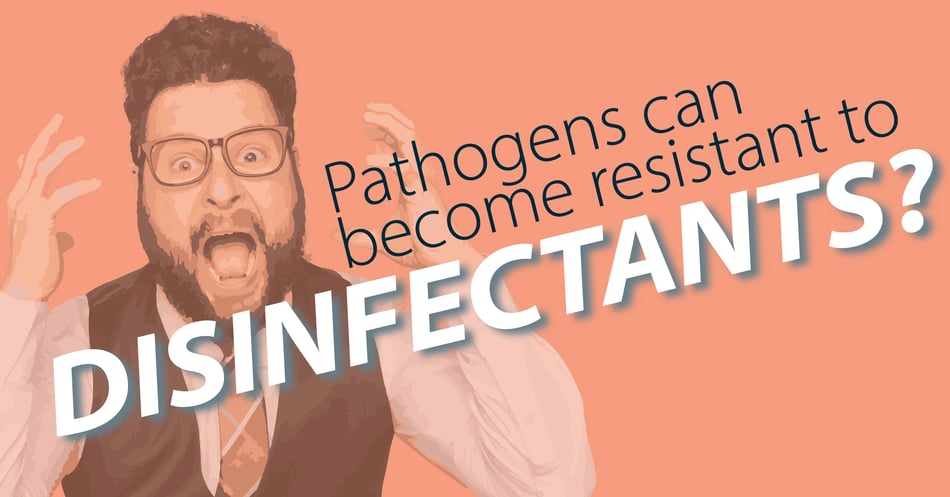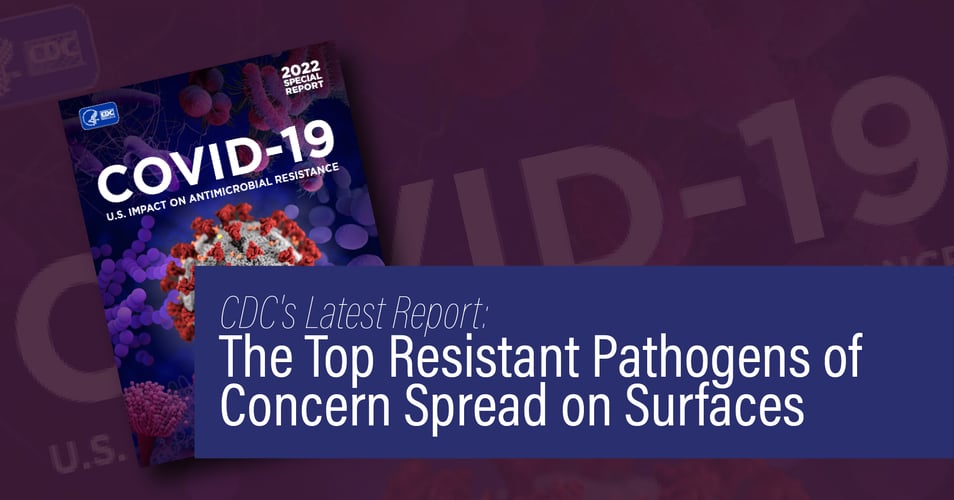Pathogens Can Become Resistant to Disinfectants?

Bacteria have been around for, oh, 3.5 billion years or so. They didn't achieve this longevity without collecting a few tricks up their sleeves. Among them is the ability to adapt to their environments from one generation to the next, activating certain genes during times of distress, changes in humidity, and access to nutrients. The resulting tricks are known collectively as "resistance." Bacteria can become resistant to antibiotics such as penicillin, creating dangerous drug-resistant strains. They can also become resistant to disinfectants, including those used in today's hospitals. In today's post, we'll learn why that matters.
Resistance to disinfectants and antiseptics comes in three forms. First, the bacteria can have intrinsic resistance, meaning the resistance occurs naturally without any adaptation. Second, the bacteria can acquire resistance through mutation, gaining resistance through the mutated genome. Third, the bacteria can acquire specific resistant genes through gene transfer from neighboring bacteria or from resistant genes carried on plasmids. These resistance genes can change bacterial cell permeability, ability to form a biofilm, efficiency in pushing out toxins (efflux), and other attributes. Some bacteria will become tolerant to a certain chemical, while others may develop total resistance. They will reproduce and pass that ability on to future generations, resulting in a resistant strain.
The degree to which a bacteria's susceptibility is reduced depends on the tools the bacteria has to work with. Some bacteria can combine resistance with the ability to revert to a spore, making them all but immune to disinfection. One pathogen that falls into this category is C. difficile, which is why bleach is needed to assure eradication. Candida auris, a particularly resistant fungus which also has spores, can only be eradicated with bleach as well.
The ability to form biofilms can also be activated through exposure. Bacteria such as E. coli, S. aureus, and others do not normally form biofilms. Through extended contact with quaternary ammonium compounds (QACs), they produce generations that have stickier membranes, enabling the biofilm to form. The biofilm, in turn, protects the colony and makes it incredibly difficult to eradicate. Many outbreaks have been caused by contaminated QACs, with bacteria colonies present in the disinfectant bottle itself. Some biofilms, such as those created by P. auringosa, can resist even high concentrations of peroxyacetic acid (PAA) treatment.
If this resistance wasn't scary enough, research has demonstrated that resistance to disinfectants is often co-adopted with resistance to antibiotics. Their pairing makes sense, as both provide protective adaptations to the environment, whether that is inside the body (antibiotics) or outside the body (disinfectants). The resistant genes that are activated - either during times of distress or transferred from neighboring bacteria/plasmids - come in chunks of genes called "cassettes." These cassettes also contain genes that convey resistance to antibiotics; they travel together. So while the bacteria is developing resistance to a QAC on a surface reservoir, it's also gaining resistance to antibiotics. If this bacteria is transferred from the surface to the patient, the result could be a multi-drug resistant infection.
Are there any cleaners that do not lead to resistance? Bleach and alcohol have the least resistance. Bacteria cannot become resistant to UV disinfection, although some tolerance has been found in certain species of viruses. Bacteria cannot become resistant to copper and copper-infused surfaces, since bacteria depend on copper for survival and cannot lose their ability to absorb it. Even after thousands of years of use, copper still has not led to resistance in any known pathogen.
Part of reducing antibiotic resistance is helping reduce resistance overall, including to disinfectants. This means using cleaners at the minimum level required to do the job, not overexposing surfaces to chemicals to which bacteria can become resistant. This also means using the right disinfectant for the job, to make sure all the pathogens are eradicated, not just the susceptible ones. Finally, the use of biocidal materials made from copper assure continuous reduction in bioburden without the threat of encouraging resistance. With global antimicrobial resistance on the rise, we all need to do our part.
![EOScu Logo - Dark - Outlined [07182023]-01](https://blog.eoscu.com/hubfs/Eoscu_June2024/Images/EOScu%20Logo%20-%20Dark%20-%20Outlined%20%5B07182023%5D-01.svg)



